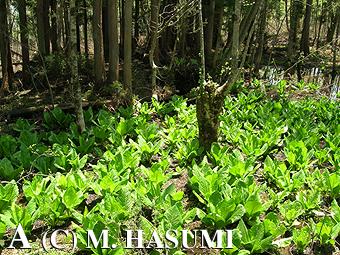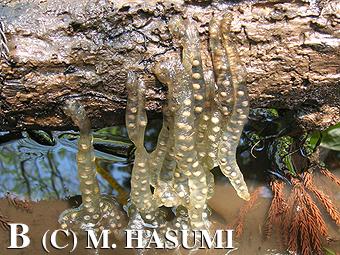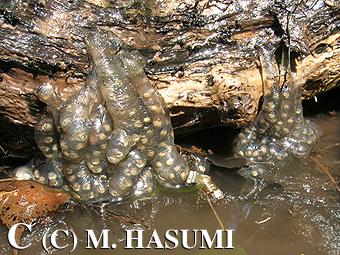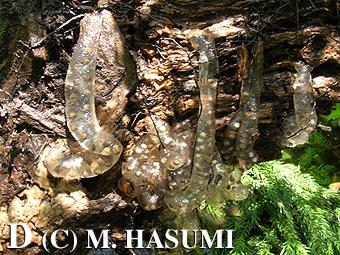



 |  |
 |  |
(A) A shallow swamp that was dominated by growing Lysichiton camtschatcense, containing a decaying log to which the adhesive tips of a total of 20 pairs of egg sacs of H. hidamontanus were attached. Oviposition did not occur at any site other than the three sites along the same log mentioned below within the swamp this year.
(B) Six pairs of egg sacs that were concentrated on one area of the log (water temperatures of 10.9 C outside the log and 13.2 C inside the log around the six pairs of egg sacs, water pH = 6.7, measured at 1058 h; 930 m elevation). All embryos (17-38 embryos) were at the blastoporic lip stage without unfertilized eggs.
(C) Mass of seven pairs of egg sacs having a 30 cm distance from B. Embryos (19-39 embryos) were from the early morula stage to the yolk plug stage with one unfertilized egg.
(D) Mass of seven pairs of egg sacs having a 30 cm distance from C. Embryos (17-33 embryos) were from the blastula stage to the horseshoe-shaped blastoporic lip stage with one unfertilized egg.
Surrounding regions of the swamp were covered with snow (30-40 cm deep) on 3 May 2006. At that time, any salamander was found neither on land nor in water (water temperatures = 5.3-8.8 C, water pH data = 6.8-7.0, snow pH = 4.7).
Accompanied Research Collaborators (alphabetical order): Masaichi Kakegawa (Tokyo Metropolitan Komatsugawa Senior High School), and Fujio Kishi and Yuko Saikawa (Shirouma Association of Naturalists).